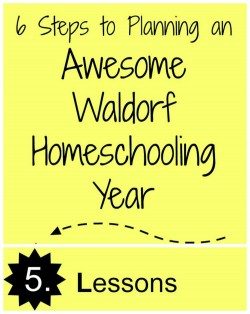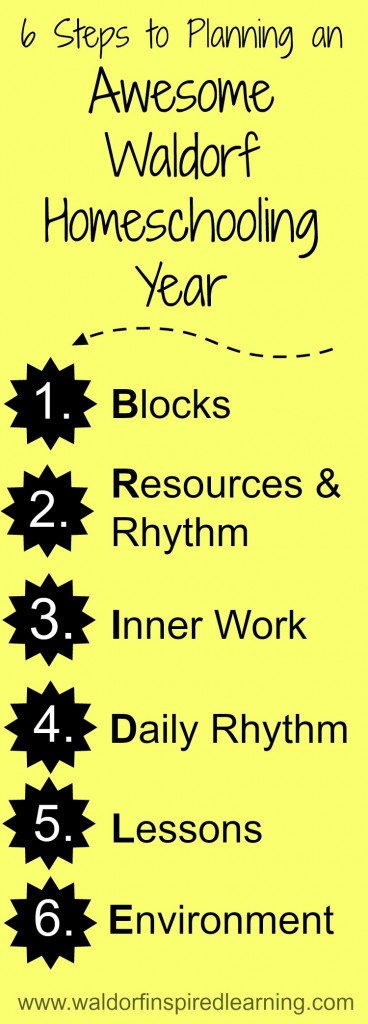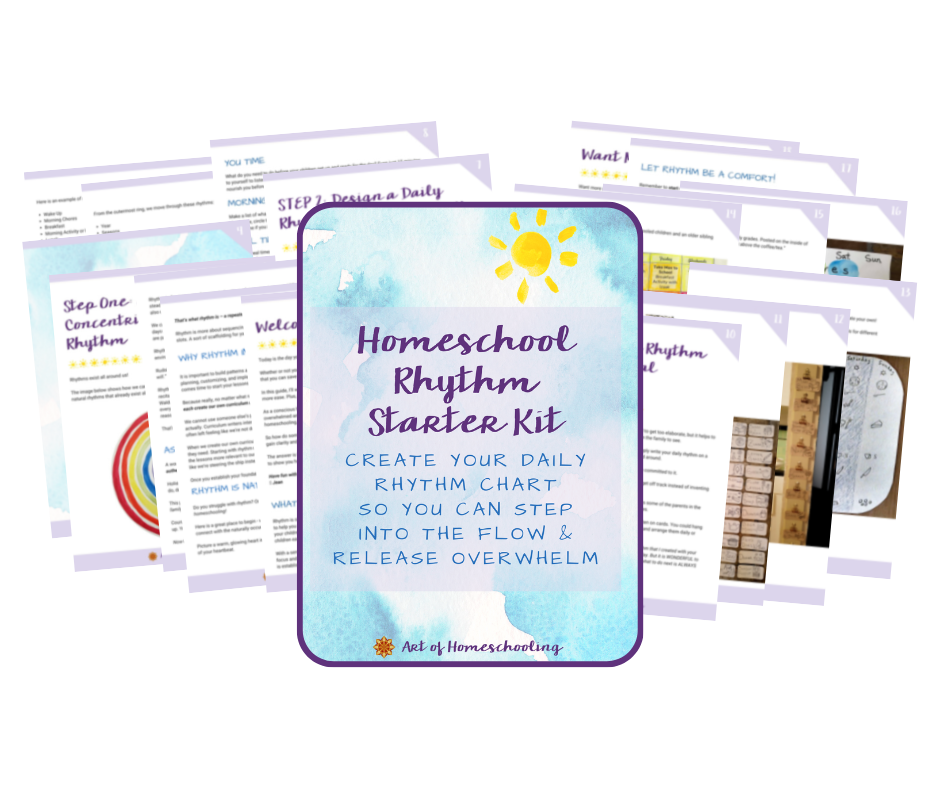So often, when we are new to Waldorf education, we think something like…”I need to learn to teach math with gnome stories. And I need to learn form drawing. And oh, there is painting and main lesson books and special songs and crayons and….” And the list goes on and on. But really, the place to start is with the essence of Waldorf. What are the core values and core principles of this method? You need to understand these so that you can get to planning your Waldorf homeschool lessons.
The simplest answer to this question of what is at the core of the Waldorf method?
Main lesson blocks and the arts.
 We are on Step Five in the 6 Steps to Planning an Awesome Waldorf Homeschooling Year.
We are on Step Five in the 6 Steps to Planning an Awesome Waldorf Homeschooling Year.
Step Five: Lesson Planning
Think of the concept of building up…you’ve already established a schedule of blocks for the year in Step One; you’ve looked at Resources & Rhythm in Step Two, created a practice of Inner Work for yourself in Step Three, and crafted a Daily Rhythm in Step Four. Now, it’s finally time to begin planning out the daily Lessons themselves. May I suggest you start with your inner work practice that you decided upon in Step Three!?! Recite your prayer or verse or meditate to center yourself before taking action on this step!
Want me to take you through this process step-by-step? Check out my online course, Plan It Out.
Many people can get hung up here in this stage of planning. There are those of us who LOVE planning and could make lists, and charts, and write detailed descriptions all day and still want to do more. (That would be me! I have a teaching degree and could plan all day, day after day. But planning is only helpful to a point. Uber-detailed planning can be an unproductive waste of time beyond a certain point!)
All of our meticulous planning work does not necessarily make everything go perfectly as planned when the day comes to execute the lesson either! For me, as an over-planner, I’ve had to learn to scale back on my plans so that I can build in flexibility and leave room for shifting sands, non-compliant kids, and spontaneous inspiration!
For others, the planning is a complete unknown and really stymies them. If you’ve never planned lessons before or if you simply have a distaste for planning, this may be you.
For this step, I want to give you a list of possibilities for how to go about planning the lessons for your blocks. Always keeping in mind that this Waldorf method is built on block teaching (one topic for 3-6 weeks) and the arts.
So, let’s say you are setting out to plan that very first main lesson block that you have written on your post-it note schedule for September.
It’s time to begin planning your Waldorf homeschool lessons! Here are the important elements of a main lesson that you’ll want to include:
- The story you’ll be sharing (reading or telling).
- An idea for a drawing from that story (or a painting).
- A few words to get a summary started from yesterday’s story.
- Songs & verses for either a dedicated circle time or to include during main lesson time.
- Bean bag verses, and a few recorder songs.
- A thumbnail sketch of the form drawing for the week.
- A handwork project (my suggestion is to pick one project per block, or if learning to knit or crochet, these projects may take a few blocks to complete!).
Action Step: Be sure to have in front of you your papers from steps one, two and four: your schedule of blocks for the year, your rhythm chart for the week along with a list of possible resources for each block, and your daily rhythm chart.
Here are a few ways to go about fleshing out your lesson plans:
- Buy a planner and begin to list what you will do each day, including the story, drawing, songs & verses (from the list above).
- Write these same things out on a calendar.
- Create your own planning sheets in either a word doc table, or excel. Then you can either fill these in on your computer or print these out, and fill them in. I would suggest eventually printing a block at a time and putting your planning sheets into a planning binder. The headings I’ve used for these vary by grade, but generally speaking, you can fit either one week on one page, or perhaps one week over a two page spread if you like to get really detailed and have more headings. The headings will be the different elements of your lessons as listed above.
- Simply keep a list of notes for each day of the block. It’s easiest to start with Day One, Day Two…up through however many days you have planned.
The amount of detail involved in your plans is up to you. Each of us is different and this depends greatly on the amount of experience you have with the Waldorf method and with homeschooling. If you are looking for more guidance in your planning, check out my guidebook Homeschool Simplicity 101.
Next time: the final step in this process is Step Six: Setting Up Your Waldorf Homeschool Environment.
And I’d love to hear from you! What questions do you have about planning your Waldorf homeschooling year?




2 Comments